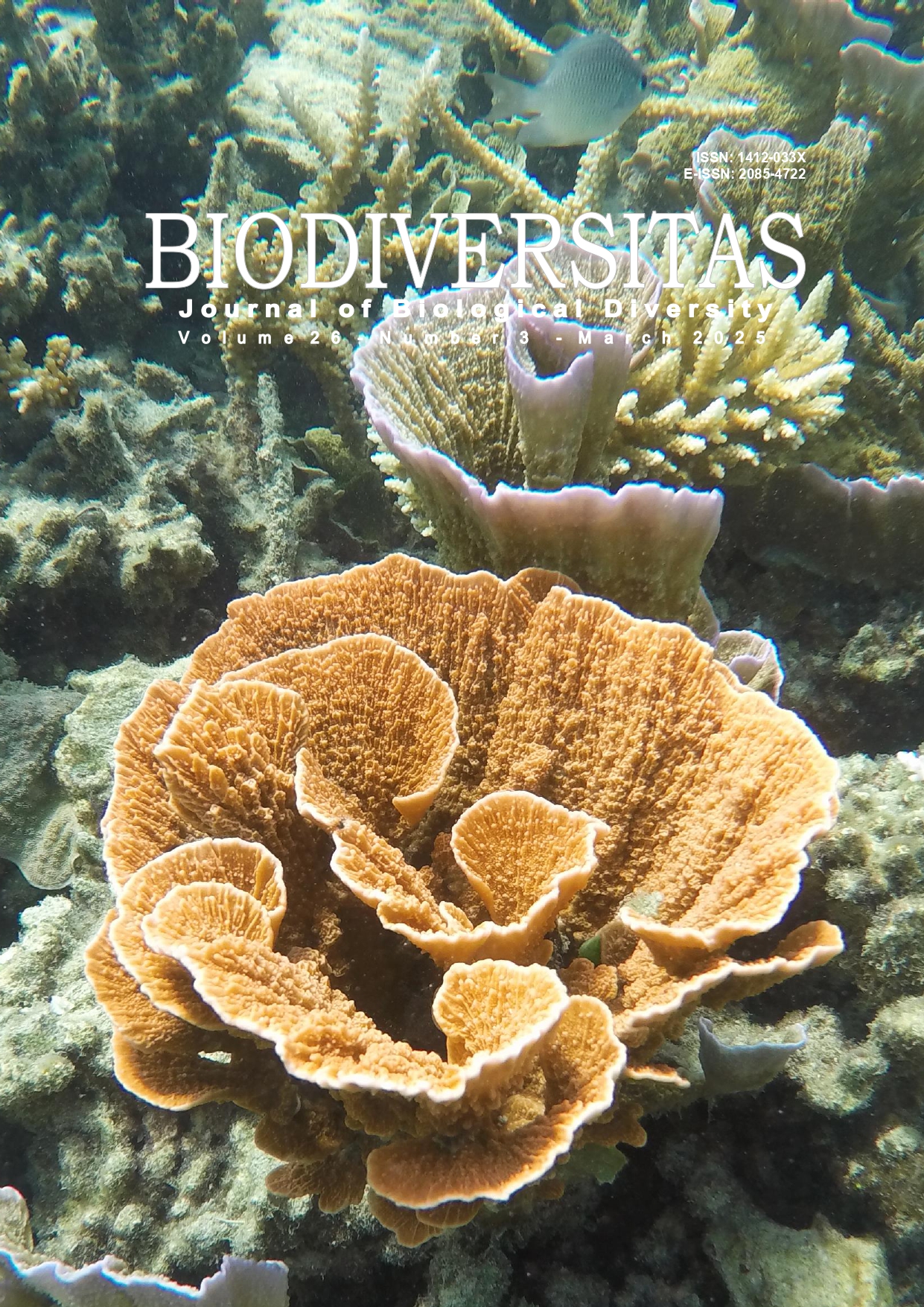Utilization of medicinal plant extracts to reduce the mosaic disease complex of chili plant
##plugins.themes.bootstrap3.article.main##
Abstract
Abstract. Damiri N, Fenton AR, Irsan C, Oktaviani, Fadly R, Pratama R, Mulawarman, Arinafril, Rahim SE. 2025. Utilization of medicinal plant extracts to reduce the mosaic disease complex of chili plant. Biodiversitas 26: 1303-1309. Viral diseases lead to substantial yield losses in chili cultivation, with the mosaic disease complex being one the most serious effects. The aim of this study was to investigate the effect of medicinal plant extracts in protecting chili plants against mosaic disease complex in the field. This research was conducted at the experimental field of the Faculty of Agriculture, Universitas Sriwijaya, Indralaya, Ogan Ilir District, South Sumatra, Indonesia. The research was desgined in a factorial randomized block. The first factor was medicinal plant extracts: A. Annona muricata leaf extract; B. Datura metel leaf extract; C. Jatropha curcas leaf extract; D. Pachyrhizus erosus leaf extract; E. Azadirachta indica leaf extract; J. control. The second factor was the interval of application time: one week (W1), two weeks (W2), and three weeks (W3). Each treatment was repeated 3 times. The extracts were sprayed at 2% concentration on chili plants. Results showed that the application of medicinal plant leaf extracts, combined with different application intervals, effectively suppresses the mosaic disease complex in chili plants. Among the treatments, extracts of D. metel and A. indica applied at two-week intervals resulted in the lowest incidence and severity of mosaic disease, both in terms of percentage and intensity. Additionally, treated plants exhibited greater fruit yield and increased plant height compared to the control group. The effectiveness of D. metel and A. indica as biopesticides is attributed to their potent bioactive compounds. Notably, applying these extracts at two-week intervals reduced mosaic disease complex attacks to just 12.02%. Further research should be conducted to optimize application methods and assess long-term effects on crop productivity.

